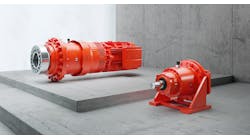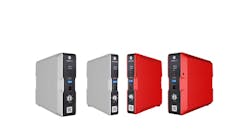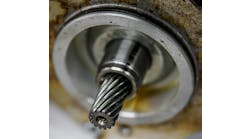There should be no doubt that motors are becoming more efficient by government regulation and the use of variable frequency drives (VFDs). Obviously, using a more efficient motor and running it at a reduced speed makes some applications more efficient.
According to the U.S. Department of Energy, electric motors are the biggest end use of electricity in the United States. In manufacturing, motors account for more than 50% of electricity consumption on machines driving fans, pumps, conveyors, compressors, grinders and mixers.
However, improper selection and maintenance of these motors can lead to inefficiencies, unnecessary energy consumption and related costs. Because of this, it is important to understand some motor and drive basics to ensure they are well-suited for the applications.
Both motor load and motor speed are important. Depending on the application, a level system approach may show the machine does not always operate under a constant production rate, demand or environmental conditions. Looking at the system as a whole may highlight that the motor rarely approaches maximum load or show that reducing motor speed, at times, is possible to improve efficiency.
The current narrative on motor efficiency is to take a system level approach. It's not just a pump; it's a system with supply and demand sides that interact and affect system performance and efficiency. Oversizing a motor to give it a safety factor may provide plenty of torque for the application, but efficiency just took a hit. To size a motor and drive system to operate more efficiently, run it between half to full load. Optimal efficiency is at approximately 75% load.
The motor may not be most efficient at loads less than 50%, but if the system works as needed at these loads or motor speeds, it can certainly save energy. Depending on whether the system is a variable or constant torque load, using a VFD to adjust the rotation speed of the motor-driven equipment can save significant energy with small speed changes.
Fans and pumps, needing little or no static lift, are examples of variable torque loads which follow the affinity laws. Simply stated, flow varies directly with motor speed, and a quick look at the affinity law equations show that input power varies as the cube of the speed, meaning small changes in speed (flow), greatly reduces input power used. Just a 20% reduction in flow uses only 50% of the energy compared to running full speed.
Although constant torque loads, such as conveyors, cranes, mixers and compressors, require a torque that is independent of speed, the input power still varies linearly with speed. Running at half speed still reduces energy use by 50%. Running any system slower, if possible, will likely save energy.
With that said, keep in mind that VFD efficiency decreases with decreasing motor load, so a constant torque load running at 25% load will not see the full benefit of running at a reduced load. However, when it comes to variable torque loads, even with reduced motor and drive efficiencies at lower loads and speeds, the energy savings are still impressive. For example, a fan providing 50% of its full load air flow requires only 1/8 full-load input power.
Big savings come in big packages. Efficiency and energy savings in large motor applications, such as with many 50 hp or 100 hp motors, can greatly reduce the monthly energy bill. A big manufacturing or processing plant may have more than 200 large motors, so a $400,000/month electric bill would not be uncommon.
Typical automated machines have motors in the 10 hp or less range; and 3 hp or less are probably most common, so don't expect to save $40,000/month by reducing energy consumption by 10%. However, whether it's a new design or existing design, understanding the effects of motor load and speed on efficiency is good practice.
Again, don't overload a motor for more than its service factors allow, and never for extended periods, but consider if the motor often runs under 50% load for extended periods. If it is, it may be oversized. While peak conditions may require motor oversizing, there are other options. These include using a VFD, a two-speed motor or adding smaller motors and adjusting the speed or the number of motors running to keep the motor loads within acceptable range.
You can purchase appropriate hardware to properly measure motor loads and energy usage. The results of measurements and analysis may highlight the need to replace an oversized motor at first chance or install a more efficient motor when a properly sized motor fails.
With a new system, be sure to have your vendor helps to size the motor properly, and carefully consider varying the motor speed depending on demand. The vendor will have much to say about energy-efficient motors and drives. Get the real specifications as efficiencies of motor, drive and system affect the product of energy usage.






